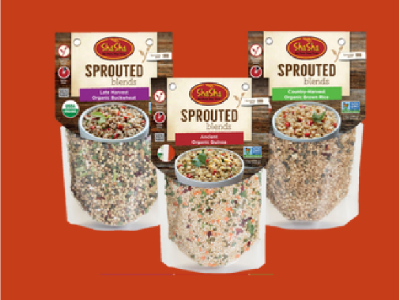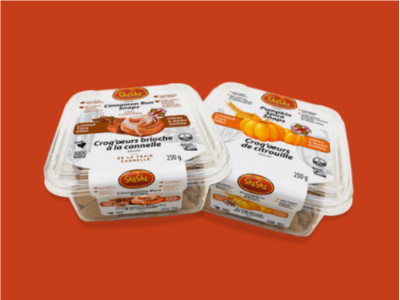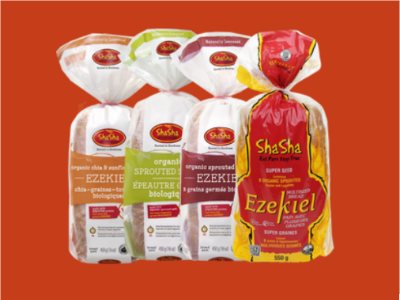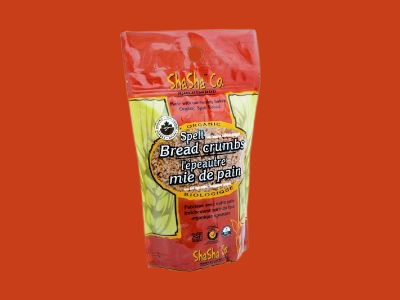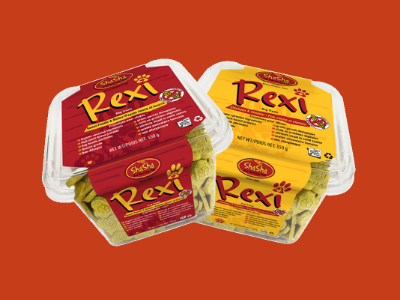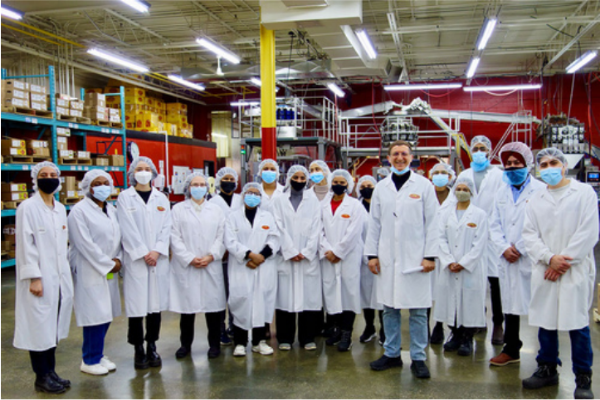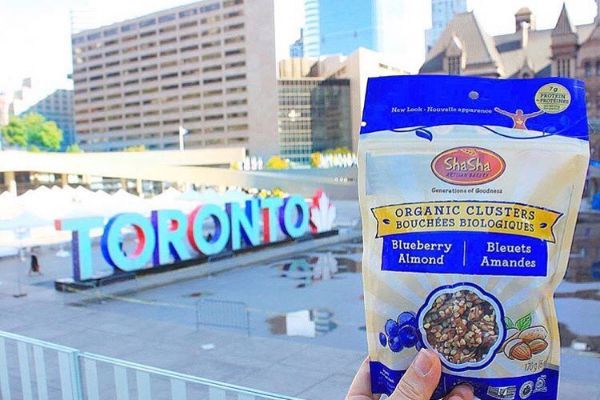April 27, 2011
I am writing you from the high arctic in the middle of my polar adventure. Thank you for all your support. Your love, thoughts, emails, blog comments, etc. have kept me going. I know that you are thinking of me and sending me good wishes. this is what will allow me to finish this incredible journey. This amazing race has had many ups and many many downs, but I am making it though all of them. What I have come to appreciate, is that coming in 1st means less than absolutely nothing. Winning this race is the experience and the memories I will take from it. Winning this race is the difference I will make when I get home. Winning this race, is NOT coming in 1st.
I have had amazing training and amazing food from (Navitas Naturals, Sha Sha Bread Co, Amazing Grass, Goconut, Sun Warrior) and I will succeed.
Thank you for your help and support. I can’t wait to share more with you when I get home.
Love Ryan.
Note: Ryan at 7:20 am Thursday, April 28th and his team finally reached their goal, the Magnetic North Pole. High on adrenaline and pure excitement they enjoyed and cherished the moment. They have been camping out there ever since, awaiting the arrival of their “pick-up” plane, which was a tricky endeavor with the uncontrollable weather conditions. We had prepared some special long lasting nutrient enriched bread for his journey. We encourage you to follow Ryan on his experience and his goal for GoodLife Kids Foundation!
February 4, 2011 Dear ShaSha
Our most sincere THANK YOU for the outstanding donation you provided for the 2011 Manulife Walk for Memories. Your contribution helped make the event a smashing success.
The Walk was a great triumph and at last count over $592,000 has been raised…far more than our $500,000 goal. Money raised from this event will go to provide counseling, education and information to individuals and families living with Alzheimer’s and other dementias, and fund research to find the cure.
Enclosed is your thank you certificate. Please display it in a place of pride to show our heartfelt appreciation.
Thank you again for your contribution and we hope that we can count on you again next year.
Warmest regards,
Stephanie Karpman
Special Events Assistant
Jan 2011, Dear ShaSha Co.
Thanks to you, the Walk for Memories 2011 was an amazing success! With 1,500 walkers, we raised $592,192 – an outstanding achievement! In the next few days I’ll be sending you a certificate acknowledging your generous donation; but until then, here is a picture of your contribution (before it was devoured)! Thank you so much for all your support, and we hope we can count on you again next year!
Cheers, Stephanie
We’re in the Globe and Mail
Report on Business, (December 21, 2010)
(please click for video)
We’re excited to present to you Globe and Mail’s
recent Report on Business of ShaSha Co.
ShaSha discusses the company’s past, present and future.

Happy Consumers! Season’s Greetings! Sent by from loyal ShaSha Co. customers, Dec 15/2010

Whole food White Plains New Jersey Dec/2010
Mr. Shasha Navazesh
President
ShaSha Bread Co. Inc.
10 Plastics Ave
Toronto, ON M8Z 4B7
October 1st, 2010
Dear Mr. Navazesh,
Thank you for your support of Daily Bread Food Bank. Your commitment and dedication to
helping men, women and children struggling with hunger in our community is
commendable.
Enclosed is a copy of Daily Bread Food Bank’s 2009/2010 annual report. As one of our key
supporters, Shasha Bread Co Inc has been listed under our Food Industry Donors
recognition section.
Thank you for your generous support in the fight against hunger and poverty in our
communities. Your support has allowed Daily Bread to provide food and resources to
people struggling with hunger, mobilize greater support and action with policy makers, and
create social change through research and public education. We could not have done this
Without your help.
Sincerely,
afifilitepatAe
Gail Nyberg, 7 Annette Paul
Executive Director of Development
Linda Ciotola
Manager, Development
Tel. 416.203.0050

ShaSha Co. introduces Bio-Buds nutrient-rich organic foods 2010
Shasha Bread Co., the Toronto-based artisanal bakery founded by president ShaSha Shaun Navazesh, has launched Bio-buds, an exciting new line of organic products made with sprouted grains, legumes and pods.
ShaSha Co. sprouts their own grains, dehydrates them at peak nutrient value, and packages them with no additives or preservatives. The dehydrated sprouts are available on their own (you can use them in place of unsprouted grains, legumes and pods in your cooking), and as a key ingredient in Bio-buds functional cereals and snacks.
So why all the fanfare about sprouted products? Because they’re unbelievably good for you. Touted as one of the most nutrient-dense foods available, sprouts have more than three times the nutrients of unsprouted seeds. They are packed with bio-available (absorbable) vitamins, minerals, phytochemicals, and amino acids.
The heightened nutrient levels have to do with the process that occurs when a plant transitions from a dormant (seed) state to a living (sprouted) state. In the early stages of sprouting, seeds literally come to life, generating thousands of enzymes that are meant to give the fledgling plant a head start until it’s mature enough to take nutrients from the soil. Eating a plant at that stage gives us the benefit of all those enhanced nutrients; the active enzymes make it easy for our bodies to digest far more than we could get from eating non-germinated seeds. Absorbable nutrients increase, while calories and carbohydrates decrease.
“This is the food of the future,” says Navazesh. “There’s no down side. Basically, sprouts and sprout-based products are an all-natural nutrient delivery system that’s easy, absorbable and inexpensive.”
The nutritional benefits of sprouted foods are significant:
- Increased enzymes. In dry seeds, the enzymes are largely inactive. Enzyme inhibitors, which allow the seeds to last in the soil until they get enough moisture to germinate, also inhibit enzymes from being used by our bodies. However, once the seed has germinated/sprouted, those inhibitors are neutralized, and the enzymes become bio-available and easily digestible.
Those enzymes help us properly use the nutrients in the foods we eat:
- Amylase breaks down starch into more digestible forms, and converts proteins into amino acids and amides, which are the types of proteins our bodies can digest most easily.
- Lipase converts fats into beneficial fatty acids.
- Certain enzymes release polyphenolic compounds in the food, which react with free radicals to protect cells and slow down the aging process.
And here’s another indicator of increased digestibility; many people who can’t digest regular wheat bread often have no trouble with bread made with sprouted wheat. A little food for thought.
- More absorbable minerals. Due to the presence of phytates, a number of minerals that are present in whole grains can’t be absorbed by our bodies. Sprouting releases these minerals, and creates a higher quality food with nutrients that can be absorbed more readily.
- Overall higher nutrient count. Here’s an example taken from a research study conducted at the University of Minnesota (Alive, August 1995). When sprouted wheat was compared to non-sprouted wheat, the differences in nutrient levels were astounding. The sprouted wheat contained:
- 28% more vitamin B1 (thiamin)
- 315% more vitamin B2 (riboflavin)
- 66% more vitamin B3 (niacin)
- 65% more vitamin B5 (pantathenic)
- 111% more biotin
- 278% more folic acid
- 300% more vitamin C
- higher levels of enzymes including amylase, protease and lipase
And these results weren’t exclusive to wheat – other grains and legumes yielded similar numbers.
So what is sprouting, exactly?
Sprouting is the careful, time-consuming process of soaking, draining, and rinsing seeds until they germinate. ShaSha Co. has been doing their own sprouting since 1999; their purpose-designed facility is equipped with a modern sprouting system in which temperature, humidity and timing are carefully controlled for the best nutritional profile. Brown rice, mung beans, green lentils and adzuki beans are all sprouted in-house under optimum conditions for delicious, highly nutritious results.
Dedicated food scientists and technicians oversee the process. Through years of R&D, they have hit upon the ideal combination of timing and temperature. During the first 5-10 days of sprouting, plants are at their maximum nutrient density. That’s when ShaSha Co. dehydrates and retains them for use in Bio-buds products.
Passionate about making good food
Navazesh insists that everything his company produces be good for the body – and for the planet. It all has to be delicious, organic, natural, free of preservatives, nutritious, and it has to leave as small a carbon footprint as possible. If that sounds like a tall order, it is. But for this visionary entrepreneur, creating wholesome, nutrient-rich, foods is crucial. For that reason, ShaSha Co. has dedicated tremendous time and resources to the research and development of foods that meet all those criteria.
“As our lifestyles get increasingly faster-paced and more demanding, eating these powerhouse foods will help us stay healthy and function more efficiently,” says Navazesh.
Bio-buds are in stores now
Bio-buds products are now available at the ShaSha Co. retail store at 20 Plastics Avenue in Etobicoke, Ontario, and at a number of food stores across Canada. Specific retailers are listed on www.shashabreads.com.
ShaSha Co. is an artisanal bakery that combines ancient techniques with innovative methods to produce nutritious, wholesome, organic and natural products. The company concentrates on a few carefully developed products that contribute to a well-balanced, healthy lifestyle. They continuously research innovative methods of formulating and processing bio-friendly foods that taste great, offer maximum nutrition, and have minimal impact on the environment. For more information, please visit www.shashabread.com or call 416-255-0416.
Bio-Bud Adzuki Bean Sprouts Nutrition Information
Adzuki beans are a small red bean and often referred to as the “Mercedes”. Adzuki beans have been popular for centuries in Japan, Korea, Chins and Manchuria. In Japan Adzuki beans are pounded into a fine meal and used as a filling for cakes, confectionery and very often served as festival dishes on special occasions. It is also common to add flavoring to the bean paste, such as chestnut, also used to produce amanattō. Adzuki beans are about 25% protein and a rich source of lysine, amino acid. They contain all the amino acids except for tryptophan. Adzuki beans are also a rich source of iron, niacin and calcium. Sprouts are rich in digestible energy, bioavailable vitamins, minerals, amino acids, proteins, beneficial enzymes and phytochemicals, as these are necessary for a germinating plant to grow. These nutrients are essential for human health. To clarify, the nutritional changes upon germination & sprouting have been summarized below. Chavan and Kadam (1989) concluded that – “The desirable nutritional changes that occur during sprouting are mainly due to the breakdown of complex compounds into a more simple form, transformation into essential constituents and breakdown of nutritionally undesirable constituents.”
“The metabolic activity of resting seeds increases as soon as they are hydrated during soaking. Complex biochemical changes occur during hydration and subsequent sprouting. The reserve chemical constituents, such as protein, starch and lipids, are broken down by enzymes into simple compounds that are used to make new compounds.”
“Sprouting grains causes increased activities of hydrolytic enzymes, improvements in the contents of total proteins, fat, certain essential amino acids, total sugars, B-group vitamins, and a decrease in dry matter, starch and anti-nutrients. The increased contents of protein, fat, fibre and total ash are only apparent and attributable to the disappearance of starch. However, improvements in amino acid composition, B-group vitamins, sugars, protein and starch digestibilities, and decrease in phytates and protease inhibitors are the metabolic effects of the sprouting process.”
Increases in Plant Enzyme content
According to the naturopath and herbalist Isabell Shipard (Shipard, 2005) –
“Sprouts are a tremendous source of (plant) digestive enzymes. Enzymes act as biological catalysts needed for the complete digestion of protein, carbohydrates & fats. The physiology of vitamins, minerals and trace elements is also dependent on enzyme activity.”
“Being eaten whilst extremely young, “alive” and rapidly developing, sprouts have been acclaimed as the “most enzyme-rich food on the planet”. Estimates suggest there can be up to 100 times more enzymes in sprouts than in fruit and vegetables, depending on the particular type of enzyme and the variety of seed being sprouted. The period of greatest enzyme activity in sprouts is generally between germination and 7 days of age.”
“Grains and legume seeds of all plants contain abundant enzymes. However, while grains and seeds are dry, enzymes are largely inactive, due to enzyme inhibitors, until given moisture to activate germination. It is these inhibitors that enable many seeds to last for years in soil without deteriorating, whilst waiting for moisture. Enzyme inhibitors in some grains and legume seeds (for example trypsin inhibitors in raw soybeans and certain other beans and peas) need to be inactivated by heating or other processes, before they can be safely fed. However, heating, cooking and grinding processes can also inactivate certain digestive enzymes within grains and seeds. Fortunately, during germination and sprouting of grains and seeds, many enzyme inhibitors are effectively neutralized, whilst at the same time the activity of beneficial plant digestive enzymes is greatly enhanced.”
Increases in Protein Quality Chavan and Kadam (1989) stated – “Very complex qualitative changes are reported to occur during soaking and sprouting of seeds. The conversion of storage proteins of cereal grains into albumins and globulins during sprouting may improve the quality of cereal proteins. Many studies have shown an increase in the content of the amino acid Lysine with sprouting.”
“An increase in proteolytic activity during sprouting is desirable for nutritional improvement of cereals because it leads to hydrolysis of prolamins and the liberated amino acids such as glutamic and proline are converted to limiting amino acids such as lysine.”
Increases in Crude Fibre content Cuddeford (1989), based on data obtained by Peer and Leeson (1985), stated – “In sprouted barley, crude fibre, a major constituent of cell walls, increases both in percentage and real terms, with the synthesis of structural carbohydrates, such as cellulose and hemicellulose”. Chung et al. (1989) found that the fibre content increased from 3.75% in unsprouted barley seed to 6% in 5-day sprouts.”
Increases in Essential Fatty Acids
An increase in lipase activity has been reported in barley by MacLeod and White (1962), as cited by Chavan and Kadam (1989). Increased lipolytic activity during germination and sprouting causes hydrolysis of triacylglycerols to glycerol and constituent fatty acids.
Increases in Vitamin content According to Chavan and Kadam (1989), most reports agree that sprouting treatment of cereal grains generally improves their vitamin value, especially the B-group vitamins. Certain vitamins such as α-tocopherol (Vitamin-E) and β-carotene (Vitamin-A precursor) are produced during the growth process (Cuddeford, 1989).
According to Shipard (2005) – “Sprouts provide a good supply of Vitamins A, E & C plus B complex. Like enzymes, vitamins serve as bioactive catalysts to assist in the digestion and metabolism of feeds and the release of energy. They are also essential for the healing and repair of cells. However, vitamins are very perishable, and in general, the fresher the feeds eaten, the higher the vitamin content. The vitamin content of some seeds can increase by up to 20 times their original value within several days of sprouting. Mung Bean sprouts have B vitamin increases, compared to the dry seeds, of – B1 up 285%, B2 up 515%, B3 up 256%. Even soaking seeds overnight in water yields greatly increased amounts of B vitamins, as well as Vitamin C. Compared with mature plants, sprouts can yield vitamin contents 30 times higher.”
Chelation of Minerals Shipard (2005) claims that – “When seeds are sprouted, minerals chelate or merge with protein, in a way that increases their function.”
The nutritional value of Bio-Bud mung bean sprouts
Very modest green bean sprouts very common, but can not be underestimated. Maybe you do not know the nutritional value of mung bean sprouts number. Then come to tell you the following very humble green bean sprouts how high nutritional value Whichever.
Although the energy contained in low green bean sprouts, but rich in fiber, vitamins and minerals, there is beauty detox, Cellulite laxative, anti-oxidation effect. From the nutritional point of view, mung bean sprouts in the heat very low, per 100 grams of green bean sprouts contain only 8 calories Ka Road, and its wealth of cellulose contained in it can promote bowel movements, has laxative effect, these characteristics determine the mung bean sprouts have a role in weight loss. Therefore, to healthy weight loss, you can often choose the green bean sprouts side dish as a daily diet. Recommend a cold green bean sprouts here, practice is very simple, very suitable for cooking their own produce.
Partial cold and cool green bean sprouts, eat more easily defeated by cold and cool the stomach, therefore, is a deficiency disease, cold and dampness of the patients, such as chronic colitis, chronic gastritis, diarrhea and other diseases can not eat. Cooking should be accompanied by a little ginger or pepper wire, or the role of partial temperature of parsley, Jiu Huang and other fry, and it is in the cold. Also, when cooking green bean sprouts add some vinegar is best, it will give the coagulation of protein as soon as possible, eating up even more refreshing.
Second, the mung bean sprouts in addition to the normal “pass down” effects, or a nutritious vegetables. According to analysis, bean sprouts contain protein, fat, carbohydrate, vitamins, fiber, carotene, niacin and phosphorus, zinc and other minerals, therefore, often eating, nutrition will not appear a single situation. In addition, mung bean sprouts in the germination process, vitamin C, riboflavin will be a substantial increase, it is suitable for hot and cold and dry season is high due to deficiency of vitamin deficiency tongue sores go far human consumption.
People notice when having fun!
Our last minute float entry in this year’s Toronto Pride has resulted in a welcome surprise.
We are honoured to have been selected for:
2010 Pride Parade Awards Float/Vehicle Winners-
-Best Overall Float- ShaSha Bread Company
We would like to thank Pride organizers of their recognition and we are looking forward to Pride 2011!
Warm regards,
ShaSha
A question of ‘progress’
Written by: Shasha Navazesh
Why is obesity such an overwhelming problem in our society? Why are cancer, diabetes, allergies and other illnesses on the rise? Why is such a high percentage of the North American population hypoglycemic? The answer is simple: the foods we eat aren’t meeting our needs. In fact, much of what we eat is actually damaging us.
So, why aren’t we eating well? Over the past 200 years, food has changed dramatically. Humans have changed too. But they don’t seem to have changed together.
In the past 100 years, the human genome has been mapped, the atom has been split, our use of technology has exploded, and our understanding of the world has grown exponentially. We have gained a new capacity for multitasking and dealing with stress and crisis. We’re using more of our brains and our life expectancy has almost doubled. We have changed almost everything about the way we live and work.
The quality of food we eat has changed, too, but not in a good way. The evolution of food is not keeping up with the evolution of the people who eat it.
Five thousand years ago, humans first cultivated seeds. Two thousand years ago, the Egyptians invented fermented bread. For millennia, people made their own bread from whole-grain, locally milled wheat. Then, 200 years ago, the industrial revolution happened, and milling stopped being a small-batch, local pursuit, and became a manufacturing process in which factory mills were faster and could produce more flour.
Since then, bread – and food in general – has taken a huge leap toward mass production. Because foods started being made in such vast quantities, they could not be consumed as soon as they were made. They required storage, and needed to have a longer shelf life. So in came the additives and preservatives. And out went nutrition and freshness.
Since the industrial revolution, everything has become about making more stuff faster. In the food industry, quantity trumps quality. Seeds are genetically modified to grow faster and produce heartier crops that can be stored and shipped without damage. Nitrogen is used as fertilizer, resulting in huge yields; herbicides, pesticides and chemical fertilizers add to the toxic, carcinogenic cocktail. Vast tracts of land are used for single crops, depleting the soil of key nutrients and minerals. For example, silica, a nutrient that keeps skin resilient, no longer exists in the land. Now taking a pill is our only option.
Food isn’t about nutrition anymore. It’s about big business.
Let’s take bread as an example. Once milling was industrialized, a bleaching agent was introduced into the process to create white flour, which was perceived to be cleaner and more “upscale” than its rougher-looking (yet infinitely healthier) unbleached counterpart. Bleaching flour involves taking out the bran and the germ – which contain pretty much all of the nutrients – and leaving behind only starch.
Today, we’ve concluded that bleached white flour isn’t good for us. So the government, instead of encouraging traditional milling, has mandated white flour be enriched. That means all the bran and germ is stripped out of the wheat, then pharmaceutically made nutrients (which are, as you might imagine, more difficult for bodies to absorb, since they’re artificial) are added back in. Why aren’t the nutrients left in to begin with? Because doing it the old-fashioned way is expensive and time-consuming, and most people aren’t willing to spend the extra money on their food.
This departure from food as sustenance to food as a product isn’t limited to bread. It’s everywhere, in everything we eat. Remember when tomatoes tasted good? Your tastes haven’t changed. The tomatoes have. Seriously, if you ever ate a tomato in Italy, or one grown in your backyard from an heirloom plant, you would never touch the flavourless ones in the produce department again. Food has evolved from local, small-batch, homemade sustenance to a manufactured, mass-produced product. That adds up to a basic lack of nutrients – and toxins our bodies don’t know what to do with. Manufactured foods cheat our bodies. So we get fat. We get sick. We are literally killing ourselves with bad food. It’s sad and disturbing. Fruits and vegetables no longer smell or taste like they’re supposed to. In an effort to bring us fruit that looks beautiful and can be transported great distances, producers have robbed their products of flavour, aroma and nutrients. Everything is about shelf life and durability. Items have to be picked unripened so they’ll last longer. But ripe fruits and vegetables have the highest enzyme activity and highest level of nutrients. Most of the things we buy are picked at 50 per cent or less of that potential. And so many of the foods we eat are genetically modified – again, for durability, shelf life and resistance to pests. You know those Granny Smith apples that have extra-thick skin? They’re like that because they have been combined with fish genes.
That’s what we’re eating. It’s what we’re feeding our children. And yet we wonder why, even when we “eat right,” it isn’t making us as healthy as it should. Cancers and allergies are a byproduct of the things we are doing to our food sources and our environment. People have started waking up to this fact. It’s a movement that started in the 1960s, but really took off in the ’90s, when people sat up and said, “What the hell are we doing to ourselves?”
We’re realizing that being able to eat strawberries in January means leaving a huge carbon footprint. That maybe eating things sprayed with chemicals designed to kill weeds and insects probably isn’t so good for our bodies, either. That stripping the natural nutrients out of food and then adding artificial ones back in doesn’t make sense. So many of us are eating more healthfully and making better choices. But when the choices we have are poor, what should we do?
Ideally, we should make food the way it was done 200 years ago. However, I know that eating organically and locally is something that can’t work on a global level; it’s too expensive and time-consuming. You can’t feed six billion people with organically grown products. Without genetic modifications, etc., we would simply not be able to feed the world. So I can’t, in all fairness, condemn the entire system.
It’s necessary. But it’s certainly not ideal. We need something bigger and better that can feed everyone – properly.
So what do we do? I think food has to go backward to match the forward movement of human evolution. We need to find a new way of growing, storing, processing, manufacturing and consuming food. We may not be 100 per cent sure of what that should be, but here are a few things we do know:
- Growing food should not be damaging the soil. Farmers should be rotating crops, and the government should be encouraging responsible farming.
- We shouldn’t be shipping food across continents. Growing and storage should be done at a local level as much as possible, with minimal logistics and movement. We should eat locally and seasonally.
- We should be phasing out herbicides, pesticides, additives and preservatives, and finding natural ways of protecting crops and keeping products fresh.
- We should be rethinking genetic modification of our foods. The best way to do that is to be educated – and stop buying questionable foods that have been designed in a lab. In Europe, for example, where genetically modified foods are not permitted, the incidence of people with wheat allergies is significantly lower than in North America.
- We need to change the way we think about food. We shouldn’t be eating three large meals a day, and getting hungry in between. When we get hungry, we run out of energy. We get moody, tired and irritable. So we reach for a fast source of energy – our bodies crave sugar. But as we know, sugar enters the bloodstream quickly, giving us a boost; after it spikes, we crash. So we reach for more sugar. This is the nasty cycle that causes obesity. Instead, we need a continued source of energy that provides constant nutrients. If we had a source that kept us satiated, we would make fewer bad food choices – and have healthier lives.
There’s no single answer to this issue. But it helps to spread awareness. At Shasha Co., we try to educate people. We’re also trying to do our part by creating a range of tasty, functional, raw, low-glycemic-index foods that are grown naturally, contain actual nutrients, undergo minimal processing, can be consumed throughout the day, and don’t leave a big carbon footprint. They are multi-use foods that can be used as snacks, cereals, or porridges, can be cooked with other ingredients, or just eaten as snacks. Our bodies need these types of foods, and our planet needs us to produce them in a responsible way.
To make a real difference in our health and our environment, we need to change the way we look at food and eating. And that will take time and effort. But I hope this article is a step in that direction, something that makes us think about what we eat and the products we produce and sell. / BJ
Shasha Navazesh is the owner of Shasha Co., a natural artisan bakery in Toronto. He is also the founder, chairman and president of the Artisan Bakers Quality Alliance.
Email from one of our customers /Jan /2010
I just returned home from the Princess Margaret Lodge in Toronto. After undergoing Chemo treatment for breast cancer, I stayed at the PM lodge for 4 weeks while receiving my radiation treatments. Along my journey I have been so impressed by the care and concern by all that I have vowed to give back as much as I can after my recovery.
One way is to learn therapeutic touch to offer free of charge to people.
This may sound strange but I also thought of your company. During my chemo, when I had any hints of naseau, I ate your “Original Ginger Snaps”! Along with positive thinking and family support, they did the trick.
While I was at a chemo treatment I met a 21 year young man. His mother was telling me how he got so sick when he received his treatment. It was just the initial insertion of the IV that he got this horrible taste in his mouth that made him sick. He was always so nervous for all of his treatments.
I quickly took out my bag of ginger snaps and offered them to him. Along with the cookies I told him he had to breath in positive and breath out the fear he had.
His mother came over to me after his treatment began. She was in tears. She said “thank you so much, he ate the cookies and had absolutely no problems or bad tastes in his mouth”. It made 3 people happy that day.
1)The young man, 2) Me 3) His mother….The hardest thing for a mother is to see their child go through this whole thing!!
At the Princess Margaret Hospital they bring around little packages of biscuits and small juice cups to offer to those waiting for treatment or family undergoing treatment.
Have you ever thought of packaging your ginger snaps in little travel size packages?? To have these available for patients experiencing nauseau symptoms would be great. A good test market would be the PMHospital!!
I would love to hear back from you.
Thank you so much,
Mary Becker
Shasha bread crumbs are going to be in the stores soon
Made with the freshly-baked, 100% organic loaves you love (never with dried bread), our bread crumbs are uniquely delicious. They are ground in a purpose-engineered machine, toasted for optimum flavour, then dried at the perfect temperature for retaining key nutrients. Our unique process yields larger crumbs, which offer more appealing texture and taste than the powder-like product that’s on most shelves today.
You’ve never tasted bread crumbs like these.

Shasha and the heath Dr. Andrew Weil March 2009 Natural Product Expo East LA CA.
ShaSha Co. Lemon Snaps

Try our New Organic Spelt Lemon Snaps
Order ShaSha Products right to your home! Finally our much anticipated On-Line Buying is now available from our website. Shop for your favourite ShaSha Products, and have them delivered anywhere in Canada or the US!
Please note, if you would like to recieve the same order delivered to you every week, let us know and we can set you up with a standing order.

